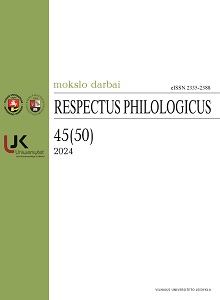Wyrażenia z kwaziapozycjami w najdawniejszej polszczyźnie
Expressions with Quasipositions in the Oldest Polish Language
Author(s): Piotr ZbrógSubject(s): Syntax, Historical Linguistics, Western Slavic Languages, Phraseology
Published by: Vilniaus Universiteto Leidykla
Keywords: Polish syntax; expression with quasiposition;
Summary/Abstract: The article describes Old Polish constructions containing expressions and phrases constituted around such elements as name, for name, mentioned, czusz, word, i.e., e.g. high mountain for the name of Tabor; said area Zakrzewo; in the city, his name is Kamon. As has been proven, they largely imitated typical groups with appositive adjectives. In many cases, they were used interchangeably in texts, e.g. follower, czusz Jan / follower Jan; the river’s name is Jijon/Jijon River; on the mountain of Gilead/toward the mountain of Gilead. Due to the peculiarities of their structure and specific syntactic limitations, the analyzed constructs gradually go out of use in relation to the expansive and hitherto exploited appositional groups. Their use was not favoured by their analytic structure and the complexity of the duplication of the syntactic scheme. They relied on a greater number of components than synthetic appositions. The expressions described in the article functioned mainly in medieval Polish, but, for example, a proper name was still found in the 17th century, and the proper name was also found in modern Polish. In the literature, phrases such as czusz / toczusz, to jest or słowie were sometimes treated as appositions. However, due to the definitional features of appositional groups, they should be excluded from this set.
Journal: Respectus Philologicus
- Issue Year: 2024
- Issue No: 45 (50)
- Page Range: 49-59
- Page Count: 11
- Language: Polish

